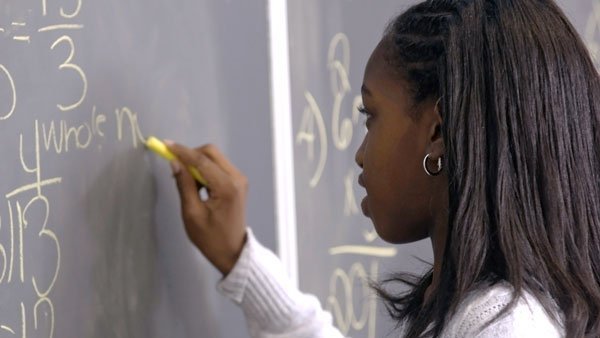Formative assessments, when used correctly and in context, can lead to increased engagement and improved outcomes for students.
But defining how formative assessments can help educators, or even what they are for in the first place, can be difficult without a clear understanding of what the process calls for.
Defining Formative Assessment
Teachers use formative assessments to gain insights into how students are learning. This can include students’ comprehension of concepts, acquisition of skills, or progress toward learning standards.
Unlike summative assessments, which evaluate what students are learning (usually via tests and quizzes), formative assessments are meant to provide feedback so teachers can adjust instruction to aid student learning while it’s happening. The Glossary of Education Reform notes that many educators don’t grade formative assessment tasks or assignments because they are “for learning, while summative assessments are of learning.”
According to the National Council of Teachers of Mathematics, formative assessment:
- Produces greater increases in student achievement and is cheaper than other efforts to boost achievement, including reducing class sizes and increasing instructors’ subject knowledge.
- Improves student achievement within and between instructional units (medium-cycle assessment) as well as within and between lessons (short-cycle assessment).
Teachers also reported greater professional satisfaction and increased student engagement in learning in classrooms where medium- and short-cycle formative assessment was used. These evaluations help both students and teachers understand their successes in the classroom and identify areas to improve.
Methods can be as simple as asking students to volunteer to explain a new concept, or as complex as having students fill out a self-assessment to take stock of their writing or comprehension skills.

Formative Assessment Today
While most educators agree on the goals of formative assessment, practices vary, and many classrooms still focus on summative testing.
Former Assessment Training Institute President Richard Stiggins told EdWeek that policymakers who champion summative assessment have a “mistaken belief that somehow annual accountability standardized testing improves schools… [this] flies in the face of everything we know.” He says that these misconceptions can lead educators to “teach to the test” and miss out on addressing student learning gaps.
Stiggins recommends starting formative assessments with learning targets for students so that they know where they are headed from the very beginning of the learning.
For example, teachers can provide students with a rubric detailing the keys to good writing. Each factor in the rubric provides a performance scale for that characteristic. As students move up the scale, they will be able to recognize the improvements and perform better on a summative test at the end of the lesson or unit.
Like a hitting coach helping a baseball player with his swing during batting practice, experts believe that formative assessment should take place during instruction and be used to immediately inform subsequent instruction. Adopting this approach can help students improve during a unit or lesson rather than waiting until the test to find out that they didn’t grasp the material as well as they thought.
Schools that have embraced formative assessment are engaging students by creating opportunities for teachers to collect feedback during lessons and class activities. Techniques for these evaluations include letting students practice their presentations, making observations during class discussions, and student self-evaluations or learning journals.
The Future of Formative Assessment
Educators who already recognize the value of formative assessment might struggle to implement the information they obtain because of the delays inherent in gathering feedback. This, like so many other aspects of the modern classroom, will improve as technology advances.
As formative feedback becomes available more quickly, teachers will be able to reduce the number of students who get left behind because they didn’t understand a lesson or skill.
This ability is particularly important in subjects that build on basic ideas to explain more complex concepts.
By incorporating formative assessment standards into their student information system, educators can easily identify which standards have been covered and close gaps in their instruction accordingly. This advancement will keep students engaged and on track with the lesson, rather than catching them up later.
Linking assignments to applicable standards in an SIS also allows teachers and administrators to track how individual students and entire classes perform according to those standards. With the right system, real-time performance data is readily available, and educators can implement the lessons of formative assessment right away.
Click here to find out how to make data-driven teaching easier.

